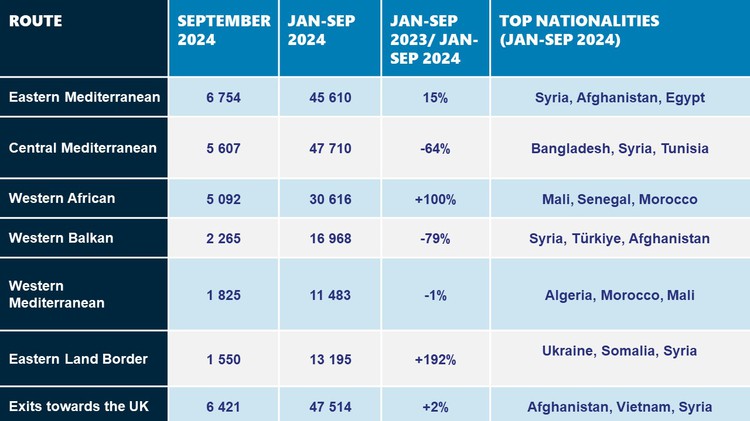According to preliminary data from the EU’s border agency Frontex, detected illegal border crossings into the EU dropped by 42% in the first nine months of 2024, with a total of approximately 166,000 detections being reported by authorities.
Significant decreases were observed on several major routes, particularly the Western Balkan and Central Mediterranean paths, where crossings fell by 79% and 64%, respectively.
The agency has deployed over 3,000 officers and personnel across Europe to assist in managing the EU’s external borders. Despite the overall reduction in crossings, some regions saw considerable increases in detections, while others experienced sharp declines.
KEY FIGURES FOR JANUARY-SEPTEMBER 2024
Central Mediterranean Route: A 64% year-on-year drop in irregular border crossings was recorded, with 47,710 detections so far in 2024.
Western Balkan Route: The largest decrease was seen in this region, with crossings down 79%, totalling nearly 17,000 detections.
Eastern Land Border and Western African Route: These two routes saw the most significant increases in detections. The Eastern Land Border recorded a 192% rise to 13,195 crossings – a new record high – while the Western African route saw a 100% jump to 30,616.
Eastern Mediterranean Route: This route saw a 15% increase in crossings, with 45,610 detections. In September, it was the busiest route, accounting for 6,754 detections, surpassing the Central Mediterranean route’s 5,607 detections for the same month.
Channel Route (Exits towards the UK): This route witnessed a 2% increase in detections, with 47,514 crossings recorded between January and September 2024. This means 47,514 individuals travelled from mainland Europe towards Britain.
NATIONALITIES
The most common nationalities of those detected crossing into the EU during this period were Syrians, Afghans, and Egyptians along the Eastern Mediterranean route, while Bangladeshi, Syrian, and Tunisian nationals dominated the Central Mediterranean route. The Western African route was primarily used by individuals from Mali, Senegal, and Morocco.

